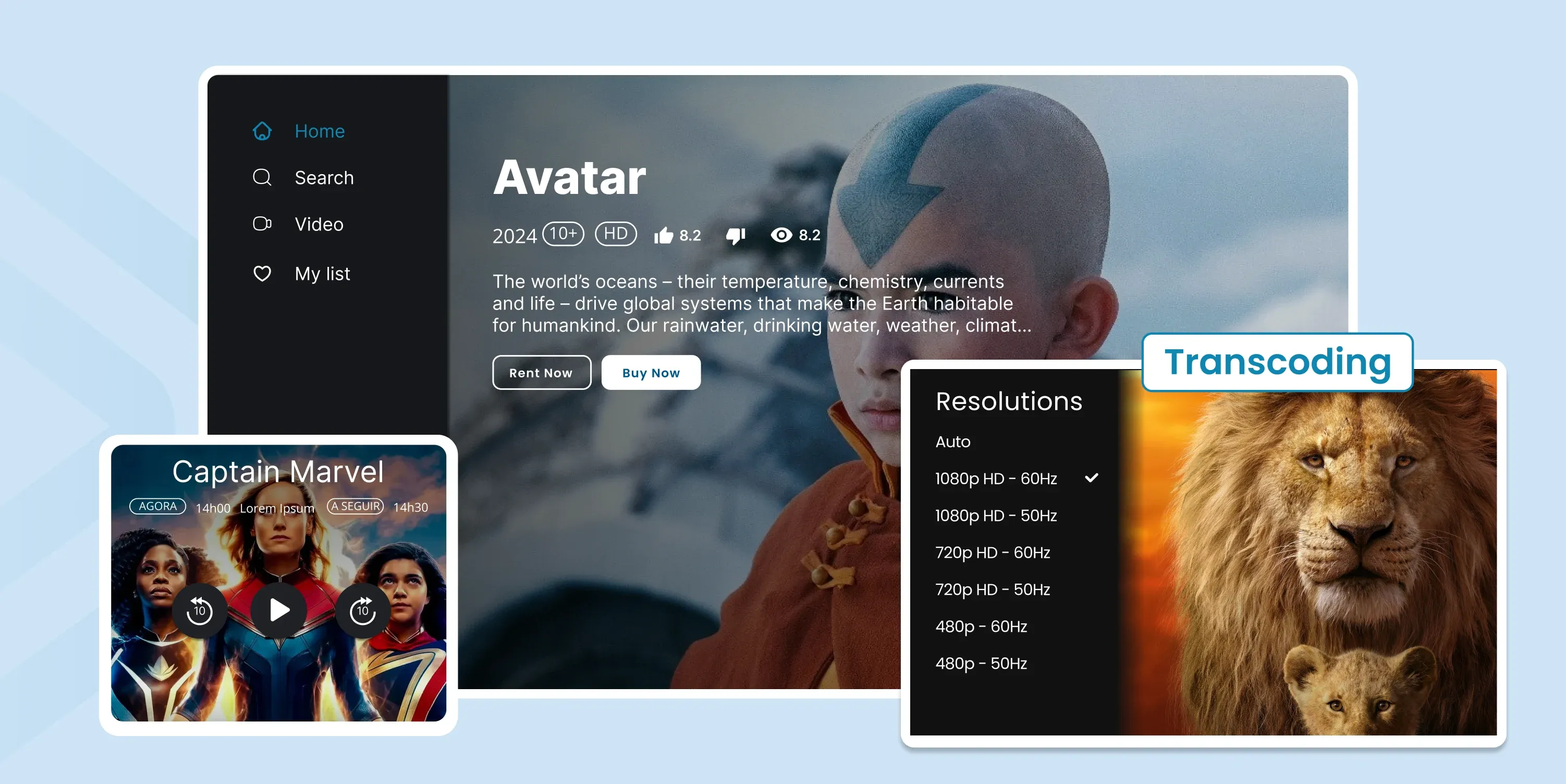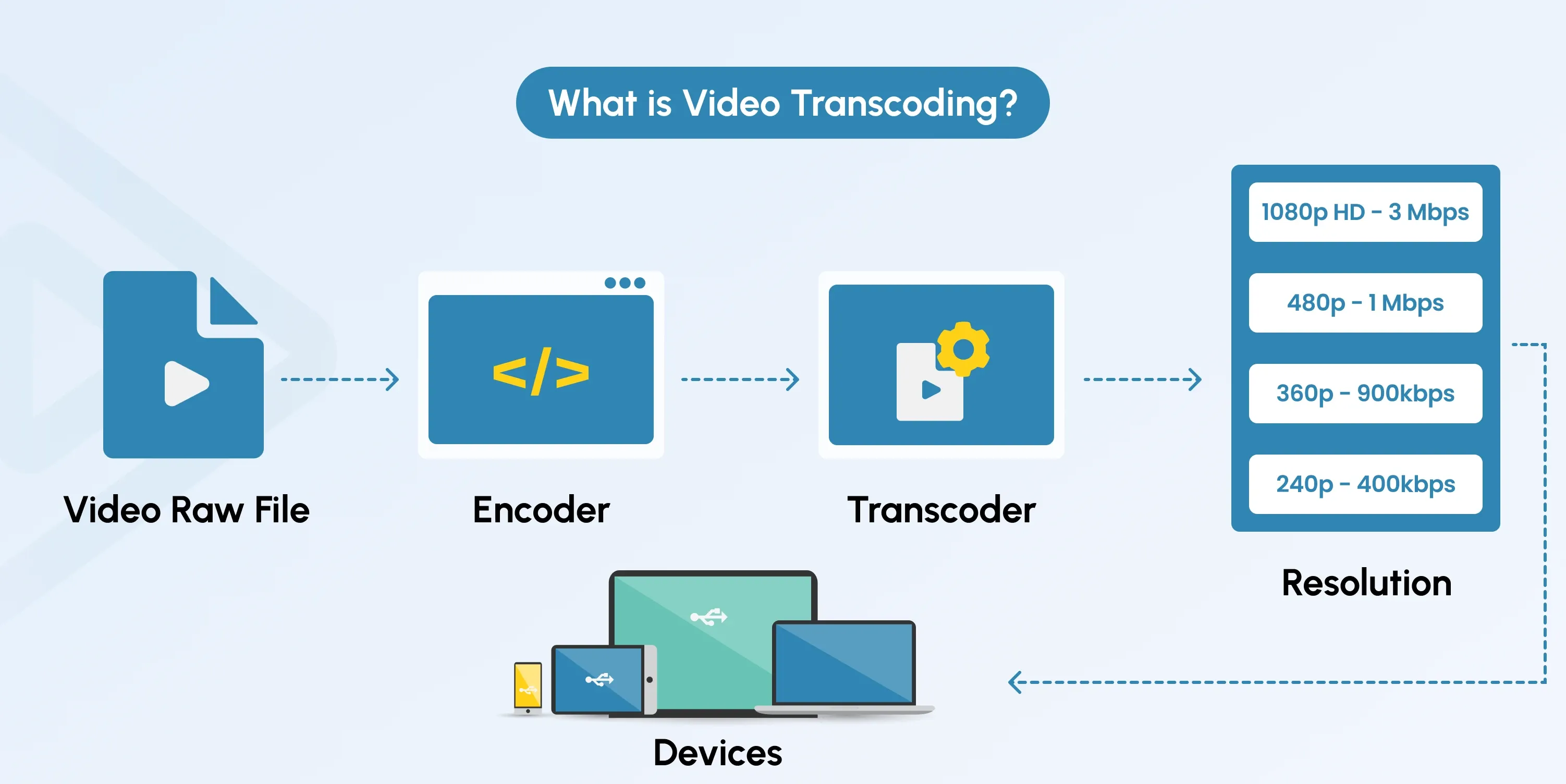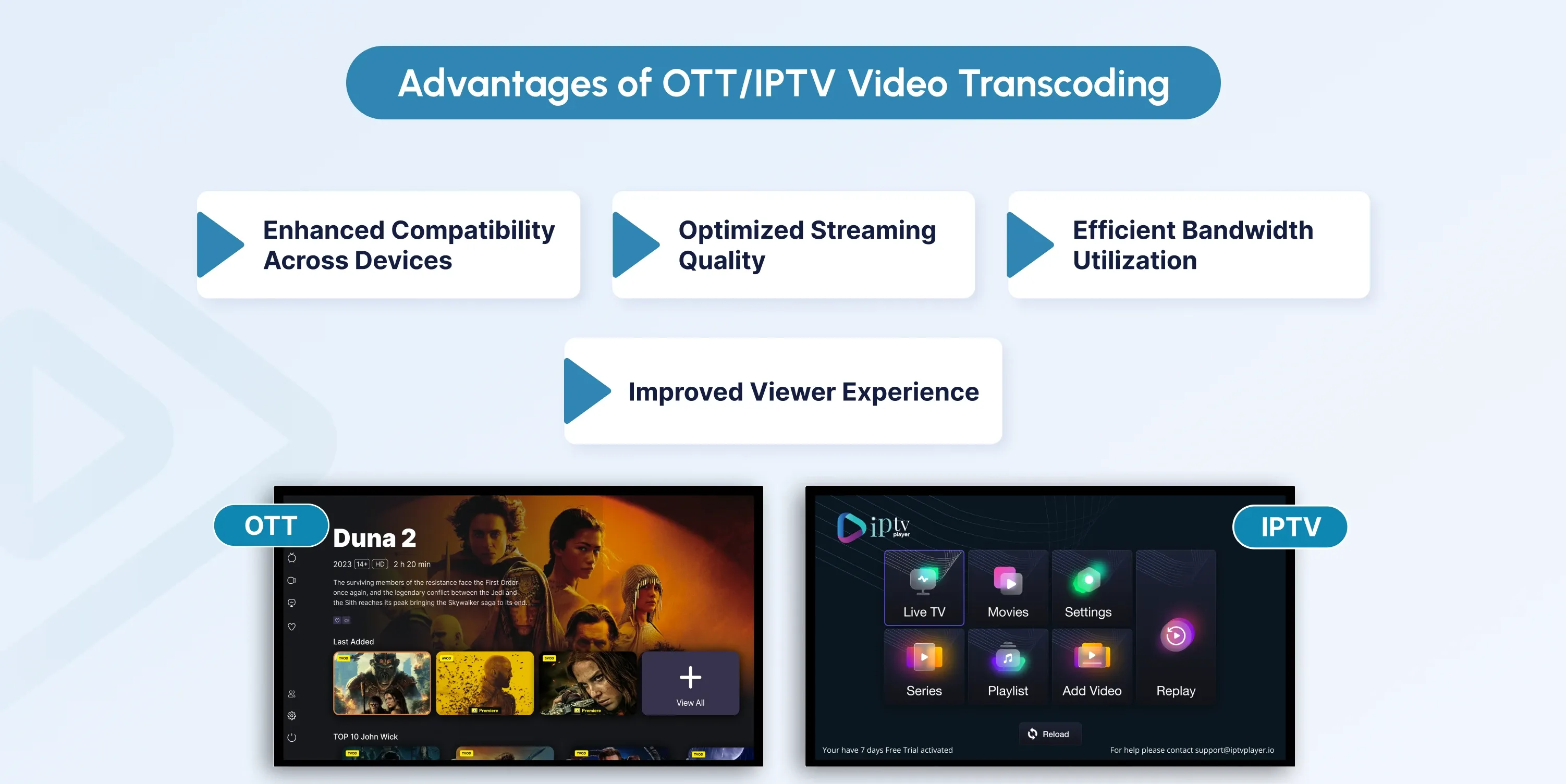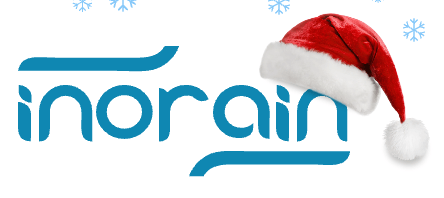
What is Video Transcoding? The Role in OTT/IPTV
Video transcoding is a game-changer in delivering content smoothly across different platforms and devices. This feature makes OTT (Over-the-Top) and IPTV (Internet Protocol Television) systems stand out in the video streaming market.
Transcoding converts video files into various formats, resolutions, and bitrates, ensuring your content looks great on smartphones, tablets, and smart TVs.
Understanding video transcoding helps you deliver a high-quality, seamless viewing experience to your audience, no matter where they’re watching from. Plus, it allows you to reach a wider audience without sacrificing quality.
So, what is video transcoding, and why is it so important? This article explains it in detail, covering key components, benefits, and differences.

Key Takeaways
- Video transcoding guarantees your content runs across several platforms and devices without problems.
- For OTT and IPTV, transcoding increases streaming performance and helps lower buffering.
- Transcoding delivers excellent video streaming with low bandwidth by varying the bitrate and video resolution.
- Transcoding allows viewers with varying internet speeds and device capabilities to access your content.
- Offering a consistent viewing experience on all devices improves user engagement and happiness.
What is Video Transcoding?
Video transcoding is the process of changing video files from one format or resolution to another, so the content is available on different platforms and devices. This means your videos are optimized for OTT and IPTV providers and compatible across smartphones, tablets, smart TVs, and more.
By transcoding your video streams, you can guarantee that your audience can enjoy high-quality content, regardless of their device or internet connection speed. This process ensures your content is always ready to deliver a seamless viewing experience.
How Does Video Transcoding Work?
 Video transcoding involves several key steps for video conversion into various formats or resolutions.
Video transcoding involves several key steps for video conversion into various formats or resolutions.
Steps of Video Transcoding
- Decoding the original video file into raw data.
- Re-encoded the raw data into the required format or resolution, creating multiple versions of the same video.
- Optimizing said versions for different devices and internet speeds for smooth content delivery.
For instance, a high-quality video can be transcoded to a lower resolution for users with slower internet connections or smaller screens, guaranteeing continuous streaming on OTT and IPTV platforms. When a viewer accesses your content, the system detects their device and internet conditions, automatically delivering the most suitable video version.
This video transcoding process ensures that your audience enjoys a consistent viewing experience with minimal buffering and greater accessibility. Whether they’re on a smartphone, tablet, or smart TV, transcoding helps your content adjust to the viewer’s environment, making it a critical part of delivering high-quality streaming across all platforms.
5 Key Components of a Video Transcoding System
1. Input Source
Transcoding begins at the input source, which could be raw footage straight from the camera, an encoded file, or live content. The quality and format of this input are crucial, as they set the foundation for the entire transcoding process. The better the input source, the more efficient and higher-quality the output, which directly affects the performance of OTT and IPTV systems.
2. Video Transcoding Program
The core of this process handles multiple video formats, adjusting the data into different bitrates, resolutions, and formats. This flexibility is critical to ensuring flawless display across various devices and platforms, whether a smartphone or a 4K smart TV, the right video transcoding software ensures compatibility by producing content tailored to the device’s requirements.
3. Codecs
These are compression algorithms used to encode or decode video and audio data. Popular codecs like H.264, HEVC, and VP9 are key to determining the transcoded content's quality, file size, and compatibility. The codec choice significantly impacts how effectively your content is compressed and distributed, making codec selection essential for optimizing OTT and IPTV platforms' video performance.
4. Computational Power
Given the computational intensity of transcoding video, having sufficient processing power is crucial, especially for high-density or large volumes of content. Whether handled by local servers or a cloud video transcoding architecture, this ensures consistent high-quality results and fast video conversion.
5. Output Format
The video is presented in the necessary forms at the last phase of the transcoding process—the output formats stage. This covers several file formats, bitrates, and resolutions—including 4K, HD, and SD—ensuring smooth access across various devices, including tablets, cellphones, and smart TVs. Several output forms guarantee that a varied audience may access and value your content.
These components together produce an effective transcoding pipeline that helps distribute premium content over several platforms and devices. Understanding and improving these elements will help provide your audience with an outstanding viewing experience and supercharge your OTT or IPTV service.
Benefits of Video Transcoding for OTT/IPTV
Video transcoding gives OTT and IPTV companies significant strategic benefits beyond improving content delivery and user satisfaction.
 Video transcoding can help your business in several ways:
Video transcoding can help your business in several ways:
Device Compatibility
Video transcoding makes your content available across various devices, including smart TVs and cell phones. Transcoding videos into several formats and resolutions will give your audience a flawless viewing experience on all devices.
Stream Quality Optimization
Video transcoding dynamically adjusts video quality based on the viewer's internet connection and device capabilities. This process helps minimize buffering and ensures smooth playback, even on low-bandwidth connections.
By tailoring content to various network environments, transcoding services maximize streaming quality, preserving an excellent viewing experience for all users, regardless of connection speed.
Efficient Bandwidth Utilization
Transcoding modulates video bitrate and resolution, improving bandwidth management efficiency. Customers with slow connections especially benefit from this enhancement, which reduces bandwidth utilization while preserving video quality. Transcoding solutions balance efficiency and quality, enabling you to produce excellent content without taxing your network's capacity.
Improved Viewer Experience
Delivering a seamless and uninterrupted viewing experience across all platforms boosts audience satisfaction and loyalty. Video transcoding ensures that your content looks flawless on both large screens and mobile devices. This technology optimizes your video for each device, enhancing the viewer experience and increasing retention and engagement rates.
Contact an inoRain expert to implement these benefits in your OTT business.
The Difference Between Transcoding, Encoding, and Transmuting
Encoding: The First Stage of Video Processing
Encoding is the first stage of video processing. Raw footage must be compressed into a specific format to make video data suitable for storage or streaming. For example, content is encoded using codecs like H.264 or HEVC before being uploaded to an OTT or IPTV platform.
This step is critical because it reduces file size while maintaining quality, making streaming or storing large video files easier. Proper encoding ensures efficient data size management without sacrificing video quality.
Transcoding: Adjusting Video for Compatibility
Once the video is encoded, transcoding becomes essential. Video transcoding adjusts a previously encoded video's bitrate, format, or quality to ensure compatibility across different devices and networks.
This process is especially important for delivering content to users with slower internet connections or smaller screens. Transcoding video optimizes high-density videos so that viewers, no matter their device or connection speed, enjoy a seamless, consistent experience.
Transmuting: Changing Packaging Without Modifying Content
While transcoding and transmuting are sometimes used interchangeably, they aren't the same. Transmuting focuses on altering the file’s form (such as changing its packaging) without modifying the video stream. In contrast, transcoding video can adjust both the audio and video formats. This distinction can be important when changing how a video is packaged while preserving its playback quality.
Optimizing Content for Streaming
Understanding these three processes is essential when optimizing your content for streaming. Whether using a video transcoding service or managing a cloud video transcoding system, encoding and transcoding are critical for efficient content delivery.
Conclusion
Improving content distribution for IPTV and OTT services hinges on effective video transcoding. Transcoding ensures that your videos are converted into multiple formats and resolutions, making them compatible across a wide range of devices and network conditions. This ultimately enhances the viewer's experience.
With advanced transcoding tools, you can efficiently manage your content, boost streaming quality, and grow your content library seamlessly.
Embracing video transcoding keeps you competitive in the evolving digital content market while improving viewer satisfaction. Partner with inoRain today to unlock the best OTT solution for your business and stay ahead of the game.
FAQs
What is transcoding?
Transcoding is the process of converting a previously encoded video into a different format, bitrate, or resolution to ensure compatibility across various devices, networks, or platforms. It involves decoding the original video and re-encoding it in a new format, which can help optimize video quality, reduce file sizes, or adapt content for different bandwidths and screen sizes.
Is video streaming possible without transcoding?
Yes, video streaming is possible without transcoding, but it limits compatibility, adaptive bitrate streaming, and performance on different devices and network conditions. Transcoding ensures smooth playback by optimizing video quality and format for various devices.
What types of videos benefit the most from transcoding?
Transcoding is especially helpful with high-resolution videos or those meant for several devices. The process ensures that your content is optimized for different screen sizes, resolutions, and internet speeds, making it look its best on every platform—from smartphones to 4K TVs.
How does video transcoding impact streaming performance?
Video transcoding enhances streaming performance by varying video quality based on the viewer's device and internet speed. This is vital for keeping audience interest, thus lowering buffering, removing disturbances, and guaranteeing flawless playback.
Can I manage transcoding for a large content library effectively?
Yes, you can effectively manage a large content library using advanced video transcoding software or platforms like those offered by inoRain. These systems are designed to scale with your growing content needs, ensuring that each video is optimized and delivered flawlessly across all devices.
Co-founder / CTO
Armen is the CTO and Co-Founder of inoRain OTT and Co-Founder of HotelSmarters, specializing in advanced streaming technologies, OTT strategy, and interactive TV systems. He builds scalable end-to-end video delivery solutions and drives technical innovation across hospitality and streaming platforms, bridging complex engineering with practical business impact.

How to Make a Short Video App (2026 Complete Guide)
Learn how to build a short video app in 2026. Explore micro-drama trends, key features, monetization models, and step-by-step development insights.

OTT Advertising: Types, Best Practices, and Strategies
Over-the-top (OTT) advertising has transformed how brands connect with consumers.

Video Streaming Protocols: Types and Use Cases
Learn about video streaming protocols, how they work, key factors to consider, and the challenges involved in choosing the right protocol.

